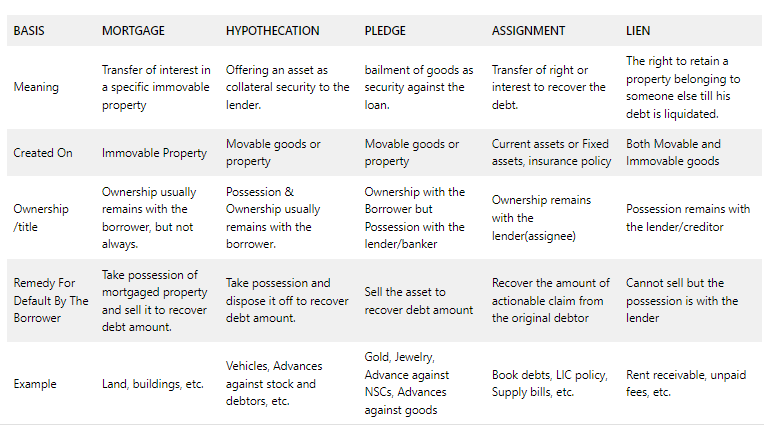India’s labour law landscape has undergone its most profound transformation in decades with the implementation of the four new Labour Codes, effective from 21 November 2025. This historic move rationalizes 29 existing labour statutes into a streamlined and modern framework. The aim is to simplify and streamline regulations, enhance workers’ welfare, align the labour ecosystem with global standards, and lay the foundation for a future-ready workforce, boosting employment and driving reforms for Aatmanirbhar Bharat.
The key provisions include universal minimum wages, standardized working conditions, broadened social security coverage, and simplified industrial dispute procedures.
The Four Pillars of Reform
The government has brought into force the key provisions of four consolidated codes:
1. Code on Wages, 2019: Focuses on wages, bonus, and equal remuneration.
2. Industrial Relations Code, 2020: Deals with trade unions, standing orders, and dispute resolution.
3. Code on Social Security, 2020: Expands coverage for benefits like PF, ESI, Gratuity, and includes gig workers.
4. Occupational Safety, Health & Working Conditions (OSHWC) Code, 2020: Covers safety, health, and welfare, including rules for working hours and women’s employment.
The new framework introduces several themes designed to unify compliance across all establishments:
| Theme | Summary of Change |
| Unified Definition of “Wages” | Wages comprise basic pay, dearness allowance, and retaining allowance minus specified exclusions. Exclusions are capped, meaning at least 50% of the employee’s Cost-to-Company (CTC) must be counted as wages for calculating benefits like PF, gratuity, and overtime. |
| Single Registration & Return | Establishments register once on the Shram Suvidha portal and file a consolidated return instead of multiple returns under different laws. |
| Inspector-cum-Facilitator | Traditional inspectors are re-designated as “facilitators” who advise employers on compliance. They conduct risk-based digital inspections and still hold powers to issue notices and inspect records. |
| Decriminalisation & Compounding | Many procedural offences have been decriminalized. First-time minor procedural offences can often be compounded by paying 50% of the maximum fine, promoting compliance over punitive action. |
| Digital Compliance | Employers are permitted to maintain registers and submit forms electronically, primarily through the Shram Suvidha portal. |
Key Features of the Four Labour Codes:
The following table summarizes the core mandates and applicability thresholds for the four codes:
| Code | Core Provisions and Features | Applicability Highlights |
| Code on Wages, 2019 | National Floor Wage: Central government notifies a floor wage that states cannot set minimum wages below. Wages must be reviewed at least every five years. Equal Remuneration: Enforces equal pay for equal work irrespective of gender or transgender status. Overtime: Must be paid at double the ordinary wage for work beyond 8 hours/day or 48 hours/week. Final Settlement (FnF): Requires settlement of all wages and dues (including salary and leave encashment) within two working days of dismissal, retrenchment, removal, or voluntary resignation. | Applies to all employees in organized and unorganized sectors, covering factories, shops, IT/ITES, and gig workers. |
| Industrial Relations Code, 2020 | Standing Orders: Mandatory for employers with 300 or more workers (covering service rules like classification, hours, and misconduct). Lay-off/Closure: Establishments with 300+ workers require prior government permission for lay-off (15 days notice), retrenchment (60 days notice), or closure (90 days notice). Grievance Redressal Committee (GRC): Mandatory for establishments with 20+ workers, requiring equal worker and management representation, including at least one woman representative. Dispute Resolution: Accelerated process through two-member tribunals; parties can approach directly if conciliation fails within 90 days. | Applicability threshold for certain provisions (like standing orders) is 300 workers. Extends the definition of “worker” to include sales promotion staff and supervisory employees earning up to about ₹18,000/month. |
| Code on Social Security, 2020 | Gig & Platform Workers: Recognizes these workers; aggregators must contribute 1–2% of annual turnover (capped at 5% of payments to workers) to a social security fund. Gratuity: Fixed-term employees become eligible for gratuity after one year of service. Maternity Benefit: Retains 26-week paid leave and mandates crèche facilities for establishments with 50 or more employees. EPF & ESIC: Coverage is extended Pan-India and made voluntary for establishments with fewer than 10 employees, but mandatory for hazardous industries regardless of size. | Applies to all establishments, employees, and workers, including unorganised, gig, and platform workers. |
| OSHWC Code, 2020 | Working Hours: Normal working day limited to eight hours. Employment of Women: Removes blanket prohibitions; women may work night shifts and in all types of establishments, including mines, with their consent and subject to safety conditions like safe transport and security. Health & Welfare: Mandatory annual health check-ups for workers aged over 40. Safety Committees: Mandatory in establishments employing 500 or more workers. | Covers factories (with revised thresholds: 20 workers w/ power or 40 w/o power), mines, plantations, contract labour, and migrant workers. |
The reforms are designed to extend protections to vulnerable and non-traditional employment sectors:
| Worker Category | New Benefit/Protection under the Codes |
| All Workers | Mandatory appointment letters to ensure transparency, job security, and formal employment. Statutory right to minimum wage and timely payment. |
| Gig & Platform Workers | Mandatory social security coverage and defined contribution model from aggregators. Aadhaar-linked Universal Account Number (UAN) for portable benefits. |
| Fixed-Term Employees (FTE) | Eligible for all benefits (leave, medical, social security) equal to permanent workers. Gratuity eligibility after only one year of continuous service. |
| Women Workers | Permitted to work night shifts and in all types of work (including underground mining) subject to consent and safety measures. Explicit prohibition of gender discrimination and guarantee of equal pay for equal work. |
| Inter-State Migrant Workers | Defined to cover self-migrated workers; receive annual travel allowance, portability of ration and social security benefits, and access to a toll-free helpline. |
Practical Obligations for Employers:
The implementation of the Codes places greater responsibilities on employers, particularly concerning payroll and HR procedures. Employers must revise their operations to ensure compliance:
• Review Wage Structure: Salary components must be reworked to ensure that at least 50% of CTC is classified as “wages” to avoid penalties related to PF/bonus liability misclassification.
• Establish FnF Workflow: Companies should adopt a strict T+2 working day internal standard for full-and-final settlement upon an employee’s exit (resignation, termination, etc.).
• Update Registration: Register on the Shram Suvidha portal (Form II) to obtain a single Labour Identification Number (LIN).
• Maintain Records: Issue wage slips (Form V) and maintain statutory registers electronically, including those for fines (Form I), deductions (Form IV), employee details (Form VI), and attendance/wages/overtime (Form VII).
• Safety Compliance: Conduct periodic safety audits, provide free annual medical check-ups for workers over 40, and supply Personal Protective Equipment (PPE) and training.
Failure to Comply: particularly regarding non-payment of minimum wages or delayed remittance of contributions (PF/ESI), can lead to serious penalties, including fines up to ₹50,000 for first offences or imprisonment for repeat violations or serious negligence causing death.
The four labour codes represent a paradigm shift aimed at fostering a fair, safe, and productive work environment by simplifying the fragmented laws and expanding the social safety net.
Q&A: New Labour Codes
1. What are the New Labour Codes?
The Government of India has consolidated 29 existing labour laws into four major Labour Codes:
- Code on Wages, 2019
- Industrial Relations Code, 2020
- Occupational Safety, Health and Working Conditions (OSH) Code, 2020
- Social Security Code, 2020
2. When will the new labour codes come into effect?
The codes are scheduled to be implemented from 21 November 2025 across India.
3. Why were labour laws consolidated?
To:
- Simplify compliance
- Improve ease of doing business
- Provide uniform definitions
- Protect workers with updated standards
- Enable digital and transparent systems
4. Who will be covered under the new labour codes?
The Codes apply to:
- All establishments
- All employees (skilled, unskilled, managerial, operational)
- Contract labour
- Gig and platform workers (under Social Security Code)
- Inter-state migrant workers
5. What is the biggest reform introduced under the Code on Wages?
A universal definition of wages that applies across all labour laws—affecting PF, gratuity, leave encashment, and salary structuring.
6. What is the new definition of “Wages”?
“Wages” include basic pay + DA + retaining allowance, capped at a minimum of 50% of total CTC.
Allowances cannot exceed 50%.
If allowances exceed 50%, the excess will be added back into “wages”.
7. How will this affect take-home salary?
Likely impact:
- Higher PF contributions → lower take-home
- Higher long-term retirement benefits (PF, gratuity)
8. Will gratuity rules change?
Yes. Gratuity will now apply to:
- Fixed-term employees
- Contract workers
- Daily wage workers
- Those who complete one year of service (not necessarily five years) under certain categories
9. How do the codes impact working hours?
The OSH Code allows:
- Flexible working hours
- 48 hours a week ceiling stays
- Companies may adopt 4-day workweek (12 hours/day cap)
10. What are the new rules for overtime?
Overtime must be paid at twice the normal wage rate and recorded digitally.
Companies must provide clear records and consent for overtime.
11. Are there new provisions for women employees?
Yes. The Codes allow:
- Women to work night shifts with consent
- Mandatory safety and transportation arrangements
- Equal opportunity in all job roles
12. What is new for contract labour?
- Increased digital registration and licensing
- Mandatory employee welfare and safety provisions
- Clarity on contractor vs. principal employer responsibilities
13. How will gig and platform workers benefit?
The Social Security Code introduces:
- Health insurance
- Accident benefits
- Maternity benefits
- Govt + aggregator (platform) contributions to a Social Security Fund
14. What happens to PF and ESI coverage?
PF, ESI, EDLI and other social security schemes will be digitised and universalised.
Single registration and unified electronic compliance will apply.
15. How do the Codes affect retrenchment and layoffs?
Under the Industrial Relations Code:
- Factories with up to 300 employees can hire/lay off without prior govt approval (increased threshold from 100).
- Clearer rules on notice pay, compensation, and worker re-skilling fund.
16. What is the “Reskilling Fund”?
Employers must deposit 15 days’ wages for every retrenched worker, which will be transferred directly to the worker’s bank account.
17. What are the compliance requirements for employers?
Employers must ensure:
- Digital maintenance of registers
- Mandatory appointment letters to all workers
- Workplace safety standards (OSH Code)
- Timely payment of wages
- Grievance redressal committees
18. What is the impact on startups and SMEs?
Positive impact:
- Simplified hiring
- Reduced compliance cost
- Ease of termination for smaller units
- Greater workforce flexibility
Some cost increase due to PF/gratuity calculation changes.
19. How will salary restructuring change post-implementation?
Companies will need to revise CTC structures to:
- Ensure minimum 50% component as wages
- Rework allowances
- Adjust PF, gratuity, bonus, and leave encashment calculations
20. What should companies do before 21 November 2025?
Recommended steps:
- Conduct a wage structure impact assessment
- Revisit payroll software
- Update employment contracts
- Modify HR policies and standing orders
- Train HR teams
- Educate employees on expected changes
- Ensure compliance with digital registers and filings
21. Do employees need to take any action?
Mostly no.
Employees should only:
- Review revised salary structures
- Understand higher retirement benefit impacts
- Update KYC for PF/ESI digital systems
22. Will the four labour codes replace all existing laws?
They replace or merge 29 major laws, but some sector-specific state rules may continue where applicable.









